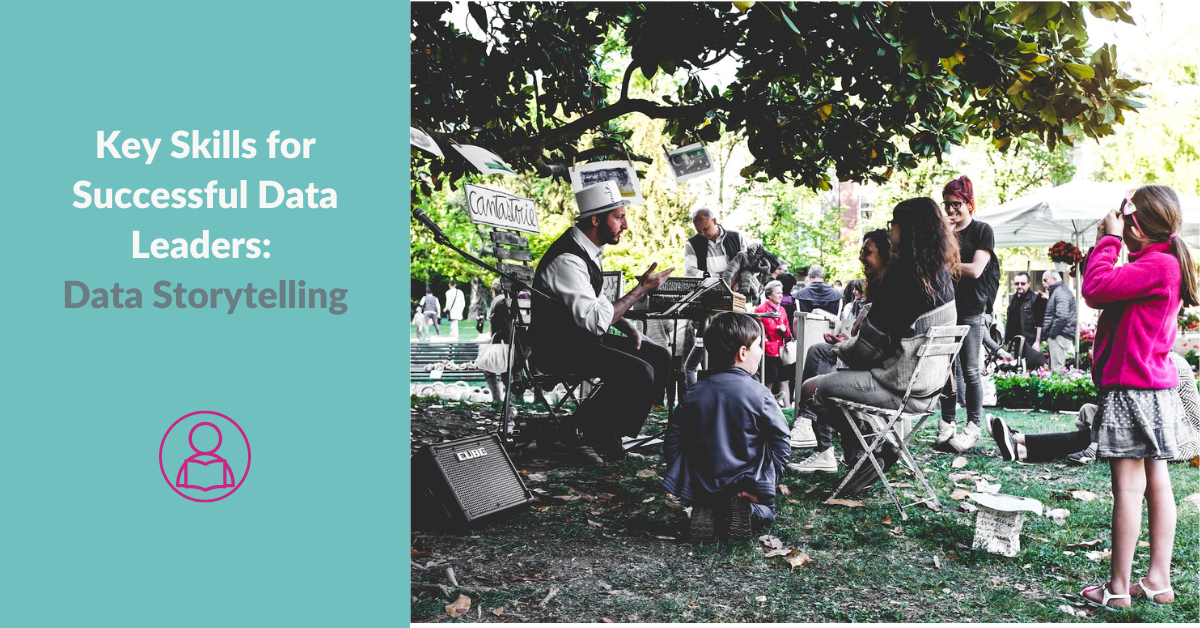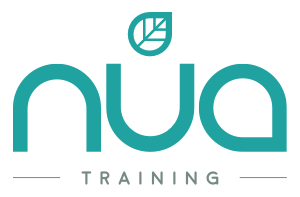
The goal of Googles’ Project Oxygen was to uncover the traits of its best managers. We shared the findings in our previous blog. Sitting at number five is Communication, and storytelling is one of the most powerful communication techniques.
As humans, we are hardwired to remember stories. The brain’s preference for stories over pure data stems from the fact that it takes in so much information every day and needs to determine what’s important to process and remember and what can be discarded.
At Nua Training we’ve trained hundreds of data leaders to present data with impact. At the start of the course, most get too caught up in the details of the data and forget that in order to get their point across and to be heard by key stakeholders, they need to tell stories.
Digging through data and making insightful discoveries is pointless if you can’t tell the rest of the business about your findings in a comprehensible manner. The goal of data insight is to help company leaders make informed business decisions. Data is powerful, but only if the data story is conveyed simply and with clarity. In order to achieve this, data teams need to have excellent verbal and written skills.
Arguably, having the data understood and the key messages remembered and acted upon are the most important part of any data activity. For example, 41 isn’t that interesting a number in isolation. It’s Wikipedia entry simply states that it’s the natural number following 40 and preceding 42. However, in the context of body temperature, the story becomes very different. At 41oC, you have a very high fever, that if left untreated, can lead to organ damage to the heart, liver and even the brain, assuming it hasn’t already killed you.
By explaining the background to the data, as well as its importance or impact, it helps to bring a number to life. The audience listens to your story, then begins to visualise what you’re talking about. That very process of the audience creating their own mental image starts to move the information from the short-term to the long-term memory, meaning your insights are more likely to be remembered and acted upon.
Since we naturally forget 90% of what we’re told within a week of hearing it, the ability to lodge these key nuggets of information in the long-term memory helps your audience retain more of your insights, and be more likely to act upon them.
So, what makes a good data story?
A good data story leverages three major components: data, narrative, and visuals.
- Data: we must have accurate data in order to reach the correct insights
- Narrative: the narrative is what describes the data and gives a voice to the most important data that underpins the key point you are trying to convey
- Visuals: enable us to spot trends and patterns in datasets, which are not easily seen in the rows and columns of spreadsheets
Think of each data point as a character in a story – a protagonist – with its own story to tell. Combined together, narrative, data, and visuals can create data stories which are powerful enough to drive change within a business.
How to create a data story
1. The audience: There are many ways to tell a story, but the story firstly needs to resonate with your audience. So, consider what the audience knows about the topic?
- Is it meant for decision makers, technical teams, or others?
- The visualisation needs to be framed around the level of information the audience already has, correct and incorrect
For example, an executive team will likely be more interested in understanding the broader business implications, whilst a data science team will be more focused on the statistical aspects.
2. The point of the story: Think about why you’re telling the story, and what you want the audience to think and do as a result.
3. A compelling narrative: We want our facts and connections to come to life in a compelling way. A classic story structure involves a setting, conflict and a resolution.
Scott Berinato from Harvard Business Review provides a simple approach to Telling Stories with Data in 3 Steps:
- Find the story: Identify three key elements in your data. Where is the conflict these three points identify? What is the resolution of this situation?
- Structuring your Story: Build your story around these three points, so it has a clear narrative that the audience can easily follow, using the classic story structure:
i. Setup: The ‘before’ state of the data
ii. Conflict: How the Data changes. Ask “What is causing this change?”
iii. Resolution/Actions: The ‘after’ state that the change leads to. Does anyone need to do anything now? How should the data be acted upon?
4. Show the most important information: Create visualisations that best represent the insights and present clear evidence of the point you’re trying to make. Just highlight the important information and leave everything else out. Less is more, as we don’t want to create information overload for the audience, otherwise the key message may be lost.
There are many different ways data can be presented, so it’s important to pick one that best represents your data. For instance, if you’re showing a trend over time, it’s likely you’ll want some type of chart that includes time series information.
Building a story catalogue
Telling stories is what stand-up comedians do to great effect. To get to that point, they practise, restructure and refine their stories, until they have the confidence in how to draw the audience in, and to identify where the big laughs are.
Now the end goal of a data story, won’t be a laugh, but building up a catalogue of good stories that you can add into discussions or presentations, where you know the message should resonate with your audience is a useful resource to have.
So, the next time you have an important piece of information to communicate, think a bit tangentially about how you could bring that information to life.
Our next blog in this series will look at Questioning and Listening and how it’s the foundation of being a good coach, Google’s number one leadership capability.
If you found this article useful and would like to know more about how to get your data presentations resonating with your audience to drive action and change, check out our course Presenting with Impact for Data Professionals or contact tony@nuatraining.co.uk
About Tony Lamb
Tony Lamb is a Director of Nua Training and Lamb Direct Consulting Ltd. He has over 30 years’ experience of launching and running data businesses and building high performing teams. His last inhouse role was as Head of Data Strategy at Royal Mail.
Photo by Antonio Molinari on Unsplash.
